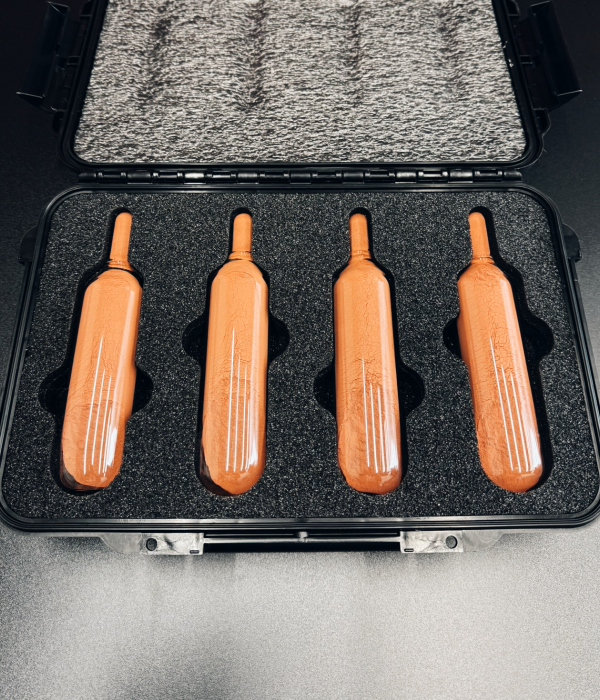Cu • Atomic Number 29

Copper
Copper is a transition metal classified as a weakly reactive heavy metal and belongs to the semi-precious metals. It is relatively soft, ductile, and tough. After silver, copper has the highest electrical conductivity of all metals.
Copper is therefore the preferred material for cables, wiring, and pipes. Almost 70 percent of copper is used in electrical applications.
The most important copper-producing country is Chile. It is home to the Escondida mine, the largest copper mine in the world, jointly operated by the mining companies BHP and Rio Tinto.
The Chilean state-owned company Codelco is the leading copper producer, accounting for ten percent of global production.
China is the global leader in copper refining.
In the EU, copper is listed as a strategic raw material, although it does not meet the threshold values. Nevertheless, due to its strategic importance for electrification, the metal was added to the list in 2023.

Copper has been in use for more than ten thousand years and has significantly shaped social and technological development.
In prehistoric times, people discovered copper in its pure form in nature and fashioned tools from it. The first metalworking took place between 5500 and 2200 BCE in what is now Iraq, Iran, and Turkey. Ötzi, the mummy found in the Austrian Alps, was also equipped with a copper axe. Around 3000 BCE, the Bronze Age began. By adding tin, copper became harder, revolutionizing weapon-making. In Egypt, Mesopotamia, and China, bronze was also used for tools, jewelry, and coins.
The Latin name for copper, "cuprum," is derived from Cyprus, which was an important trading hub for the metal.
With the Industrial Revolution starting in the 18th century, copper was used for steam engines, telegraphs, generators, and motors. Europeans exploited copper mines in their colonies to meet demand.
Today, copper remains a ubiquitous raw material found in coins, electrical and power cables, and in high-tech applications.
The primary use of copper is in electrical applications, accounting for nearly 70 percent of total copper consumption. It is the preferred material for power transmission cables and wiring in the energy industry. In electronics, copper is omnipresent in cables, connectors, printed circuit boards, and more.
In the construction industry, copper is used in plumbing, electrical installations, and roofing.
Demand for copper is expected to rise significantly due to increasing electrification. Key drivers include e-mobility—electric vehicles contain about three times more copper than internal combustion engine cars—and renewable energy technologies.
Besides traditional sectors such as coinage, copper plays a crucial role in high-tech industries. It is used in transistors on chips and circuit boards. Copper cables are indispensable in high-speed data center networks, and copper is essential for wiring, generators, and transformers in wind and photovoltaic power plants.
Copper foils are also used in lithium-ion batteries.
Copper minerals can be divided into sulfide and oxide ores, with over 80 percent of copper produced from sulfide ores. Chalcopyrite, a sulfide mineral, is the most common copper mineral, containing about 34 percent copper by weight. It is the primary source of copper production worldwide. Other important copper minerals include bornite, chalcocite, and malachite.
The extraction process depends on the type of ore. Copper from sulfides is recovered through flotation, smelting, and refining. For oxides, only leaching and electrolysis are required, allowing for simpler and more energy-efficient processing.
Copper deposits are often associated with gold and silver.
A quarter of global copper production comes from Chile, home to the world’s largest copper mine: the Escondida Mine in the Atacama Desert, operated by the two largest mining companies BHP and Rio Tinto, along with the Japanese firm JECO. A major challenge is the high water demand in one of the driest regions on earth, which is sometimes met through seawater desalination plants.
Peru and the Democratic Republic of Congo are other important mining countries. The mines are mostly owned by foreign companies.
China is a key player. Jiangxi Copper is the world’s largest copper refiner. Chinese companies also control numerous mining areas in Africa and South America.
The largest individual producer is the Chilean state-owned company Codelco, though it faces declining ore grades. Freeport-McMoRan from the USA operates the Grasberg copper-gold open-pit mine in Indonesia in partnership with the Indonesian government. BHP and Glencore are further major copper producers.
Global annual copper production amounts to approximately 27 million tons.
Copper is highly recyclable and has one of the highest recycling rates. About one-third of copper demand is met through recycling. One of the leading copper recyclers is the German company Aurubis.
Aluminum replaces copper in car radiators, cooling and freezing pipes, electrical appliances, and power cables.
Glass fibers substitute copper in telecommunications applications.
Plastics replace copper in drain pipes, plumbing fixtures, and water pipes.
Titanium and steel are used instead of copper in heat exchangers.

